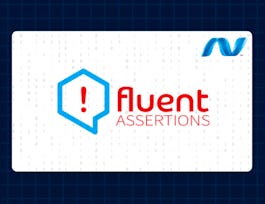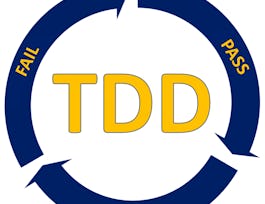Risk Analysis, Assessment, and Prioritization looks at how you can manage conflicts at system levels, but it can also be applied to lower level assessments. How do you manage and document conflict, along with alternatives? In analyzing alternatives, you must consider risks. In this course, we'll look into how to analyze risk, evaluate risk, document risks, and use this information for prioritization of requirements. Qualitative and Quantitative approaches will be covered.


Software Requirements Prioritization: Risk Analysis
This course is part of Requirements Engineering: Secure Software Specifications Specialization
Taught in English
Some content may not be translated

Instructor: Kristen Walcott-Justice
4,847 already enrolled
Included with 
Course
(111 reviews)
Details to know

Add to your LinkedIn profile
10 quizzes
Course
(111 reviews)
See how employees at top companies are mastering in-demand skills

Build your subject-matter expertise
- Learn new concepts from industry experts
- Gain a foundational understanding of a subject or tool
- Develop job-relevant skills with hands-on projects
- Earn a shareable career certificate


Earn a career certificate
Add this credential to your LinkedIn profile, resume, or CV
Share it on social media and in your performance review

There are 4 modules in this course
Once requirements have been somewhat/mostly determined, we next need to go carefully through our work. This involves analyzing risk, assessing alternative plans, and prioritizing. In this module, we examine how to begin documenting conflicts and generating conflict resolution.
What's included
3 videos3 readings3 quizzes1 discussion prompt
Risk goes far beyond security. Most non-functional requirements are part of risk analysis. In this lesson, we discuss different types of risks, how they can be identified, and how to visualize a causal linking of failures, causes, and consequences using risk trees and cut-set trees.
What's included
2 videos3 readings2 quizzes1 discussion prompt
In writing use cases and scenarios, we'll discover risk in the interactions. Interactions may happen out of order, to quickly or slowly, or not occur at all. In risk assessment, we assess the likelihood of risks and their severity, the likelihood of consequences, and thus, attempt to control high-priority risks.
What's included
2 videos2 readings2 quizzes1 discussion prompt
Many approaches can be used to incorporate risk management into your software requirements engineering process. One is Defect Detection Prevention (DDP). We can also analyze alternatives qualitatively and quantitatively. We discuss Defect Detection Prevention, Value Cost Prioritization, and the Analytic Hierarchal Process in this module and how these techniques can be scaled for every day use.
What's included
4 videos4 readings3 quizzes1 discussion prompt
Instructor

Offered by
Recommended if you're interested in Software Development

University of Colorado System

Board Infinity
Why people choose Coursera for their career




Learner reviews
Showing 3 of 111
111 reviews
- 5 stars
74.10%
- 4 stars
17.85%
- 3 stars
5.35%
- 2 stars
1.78%
- 1 star
0.89%
New to Software Development? Start here.

Open new doors with Coursera Plus
Unlimited access to 7,000+ world-class courses, hands-on projects, and job-ready certificate programs - all included in your subscription
Advance your career with an online degree
Earn a degree from world-class universities - 100% online
Join over 3,400 global companies that choose Coursera for Business
Upskill your employees to excel in the digital economy
Frequently asked questions
Access to lectures and assignments depends on your type of enrollment. If you take a course in audit mode, you will be able to see most course materials for free. To access graded assignments and to earn a Certificate, you will need to purchase the Certificate experience, during or after your audit. If you don't see the audit option:
The course may not offer an audit option. You can try a Free Trial instead, or apply for Financial Aid.
The course may offer 'Full Course, No Certificate' instead. This option lets you see all course materials, submit required assessments, and get a final grade. This also means that you will not be able to purchase a Certificate experience.
When you enroll in the course, you get access to all of the courses in the Specialization, and you earn a certificate when you complete the work. Your electronic Certificate will be added to your Accomplishments page - from there, you can print your Certificate or add it to your LinkedIn profile. If you only want to read and view the course content, you can audit the course for free.
If you subscribed, you get a 7-day free trial during which you can cancel at no penalty. After that, we don’t give refunds, but you can cancel your subscription at any time. See our full refund policy.



